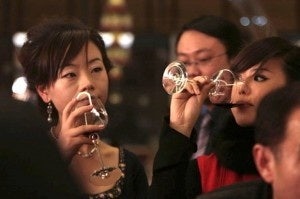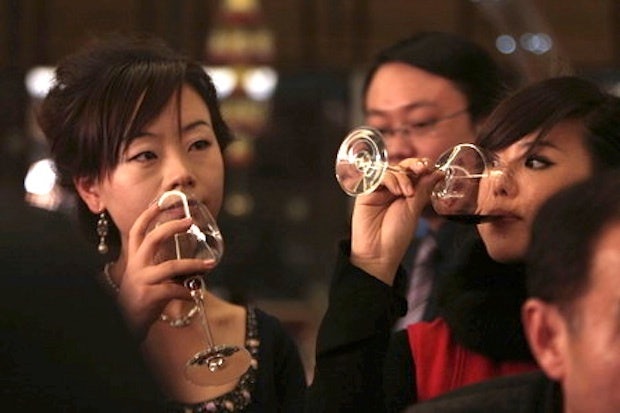Over 60 Percent Of Wine Purchases Made By Big-Spending One-Third Of Wine-Drinking Population#

Despite a growing population of exploratory "wine newbies," wine-loving returned overseas students, a curious middle class and a burgeoning group of aspiring wine aficionados, wine purchases in China still remain more closely tied to business than pleasure, at least according to one new study. According to the two-year "China Portraits" survey of over 3,000 Chinese wine drinkers, market analyst
Wine Intelligence#
found that big spenders -- who generally buy either to fill personal collections or with the intention of gifting or business purposes -- account for over 60 percent of wine purchases in China, despite making up only about one-third of the wine-drinking population.
22 percent of the wine-drinking population in China, referred to as "Prestige-seeking traditionalists," account for a surprising 41 percent of spending. This group, the study found, tends to make big-ticket purchases partly out of "business obligation," yet the volume of their annual purchases has made China's wine industry "heavily reliant" on their particular segment. In very general terms, this group focuses primarily on high-end Bordeaux and Burgundy, yet rarely ventures beyond prestige labels to buy for personal enjoyment.
The following nine percent of the wine-drinking population, the "Adventurous connoisseurs," accounts for a further 21 percent of spending. This group -- which New World winemakers and Old World white and sparkling winemakers have been keen to tap -- is looking far beyond the likes of Lafite and DRC, seeking out Australian and American wines for their own personal enjoyment rather than status-seeking or gift-giving purposes.

Together, these big-spending groups -- the face-focused "Traditionalists" and worldly "Connoisseurs" -- make up 62 percent of wine purchases in China. So who makes up the remaining 38 percent? The study pointed towards "Social Newbies" and "Casual-at-Homers," those just now dipping their toes into the wine market, making modest purchases and learning about wine in earnest. Younger, of more modest financial means and less educated than their free-spending counterparts, these groups tend to drink wine fairly regularly but make purchases at supermarkets like Carrefour or Walmart, as well as discount markets like Lianhua or Family-Mart, the study found. For winemakers looking at entering the China market in the mid- to low-range of the market, these are the groups to target, as they have shown themselves highly adventurous, proving far more willing to try different wine-making regions.
What exactly does this report mean for the current status of the China market? Mostly, it reflects what was already fairly clear: that big-ticket purchases are made with the intention of collecting or gift-giving, rather than personal enjoyment, that French wines continue to dominate at the high end of the market while domestic Chinese and Chilean wines dominate at the low- to lower-middle range, and more educated, younger drinkers are the hope for the market over the next several years. The key to sustainable health in the China wine market is for more of these regular drinkers to emerge. As Maria Troein, the author of the report, noted, "Wine as an everyday social drink is still a relatively small part of this market."
